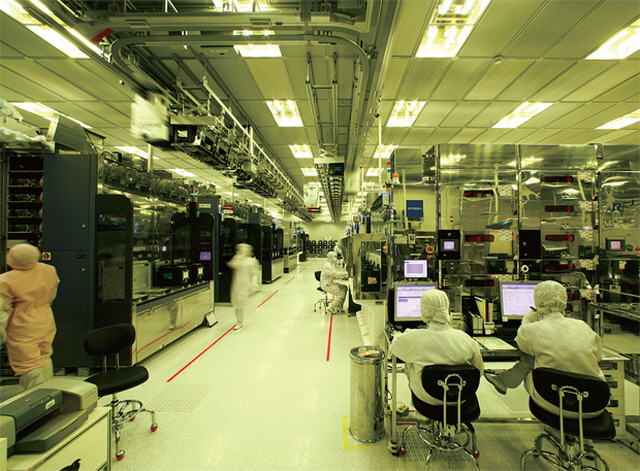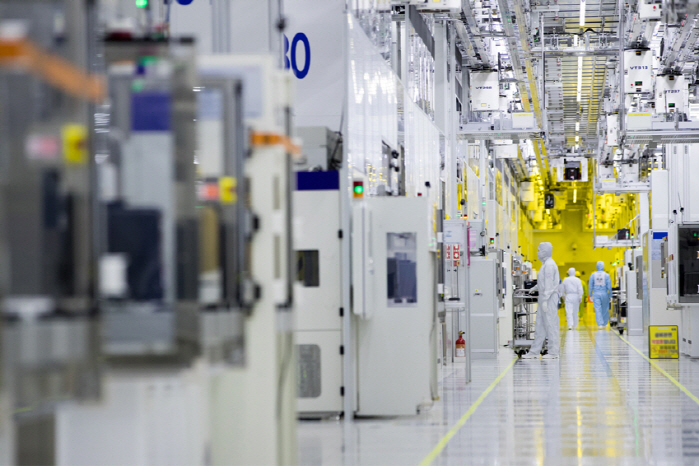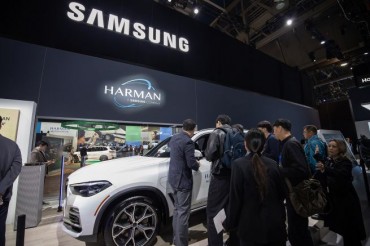SEOUL, Jun. 19 (Korea Bizwire) – South Korean chipmakers may wish they were undergoing the bottom of the memory chip down cycle in the second quarter before entering a recovery mode later this year, but it seems like they have to deal with unfavorable business conditions longer than expected due to prolonged global trade tension.
When Samsung Electronics Co. and SK hynix Inc., the world’s two largest memory chip makers, posted weak first-quarter earnings due to weak demand and a supply glut, they tried to shift investors’ focus to an optimistic projection for the second half, when inventory levels stabilize and demand picks up in the peak season.
The turnaround, however, may come later than estimated as an ongoing trade conflict between the United States and China is anticipated to hurt global demand for chips for servers and smartphones in the wake of Washington’s ban on Huawei, market watchers said.
The world’s leading telecom equipment supplier and No. 2 handset maker is one of the major buyers of memory chips supplied by the two Korean companies.
Market research firm TrendForce expected DRAM prices to fall by between 10 and 15 percent in the third quarter, worse than its earlier estimate of a 10 percent decline, as data centers may cut capital expenditure due to rising uncertainties from trade tension.
“DRAM prices have a chance to rebound in 2020 due to prices hitting the bottom, limited supply bit growth and other factors,” TrendForce said in a report.
“But for 2019, it is feared that suppliers will come under prolonged pressure to adjust prices downwards.”
The latest DRAM price chart also supports the downbeat outlook.
According to DRAMeXchange, a division of TrendForce, the average price of 8-gigabit DDR4 DRAM, a benchmark price for the category, came to US$3.41 on Monday, decreasing 5.2 percent this month. The daily low for the product fell to $2.85, its lowest level in nearly three years.
A slump in memory chip prices bodes ill for the local semiconductor industry.
According to the market consensus among local brokerages released by local market researcher FnGuide on Monday, Samsung Electronics was expected to earn 6.04 trillion won ($5.1 billion) in operating profits in the April-June period, 19 percent down from late March.
The second-quarter earnings estimate for SK hynix is roughly 827 billion won, 43 percent down over the period, it noted.
Market watchers said data centers may delay their investment plans because of the rising uncertainties in the latter half of the year, which could make suppliers offer inventories at discounted prices and hurt their profitability.
“Although we earlier expected Korean chipmakers’ earnings to bottom out in the second quarter, we’re adjusting the schedule to the first quarter of 2020,” Hwang Min-seong, an analyst at Samsung Securities, said.
“Prices of memory chips lack momentum for recovery due to high inventory levels this year.”
Analysts expected SK hynix to take a heavier blow from the slumping market, as most of its profits are from DRAM and NAND flash chips, compared with Samsung, which has a wide portfolio of smartphones, consumer electronics and telecom equipment.
Kim Seon-woo, an analyst at Meritz Securities, expected SK hynix’s operating earnings to keep shrinking in the second and third quarters, warning it could suffer an operating deficit of 277.6 billion won in the fourth quarter, putting it in the red for the first time in seven years.
“DRAM prices are falling in the face of intensifying competition,” Kim said. “SK hynix’s earnings from DRAM, its cash cow, wouldn’t be able to offset losses from NAND flash chips starting from the fourth quarter.”
Despite the dismal outlook, some analysts saw a silver lining for the Korean chipmakers as American suppliers’ cutting ties with Huawei could boost their chances of winning contracts from Chinese clients.
“There is a possibility that Huawei and other Chinese tech companies cut purchases of memory chips from American companies, including Micron and Intel, and instead increase orders from Korean manufacturers,” Song Myung-seop, an analyst at HI Investment & Securities, said. “In that case, Korean companies may post relatively better performances.”
Although the short-term outlook for the overall semiconductor industry remains gloomy, traders were not pessimistic about the share prices of Samsung Electronics and SK hynix as they were considered already undervalued given their earnings and long-term growth potential in emerging technologies, such as 5G, autonomous vehicles and cloud computing.
“The semiconductor market is anticipated to grow in line with rising demand for 5G and cloud services down the road,” said Jung Sung-han, a fund manager at Shinhan BNP Paribas Asset Management.
“The share prices of Samsung Electronics and SK hynix remain in an attractive range, which is why foreigners have been buying their shares this year.”
Samsung Electronics’ share price has advanced 14.4 percent this year to 44,350 won on the Seoul bourse as of Tuesday, while SK hynix moved up 4.6 percent to 63,400 won. Foreign investors were net buyers of the two companies’ shares this year.
(Yonhap)








